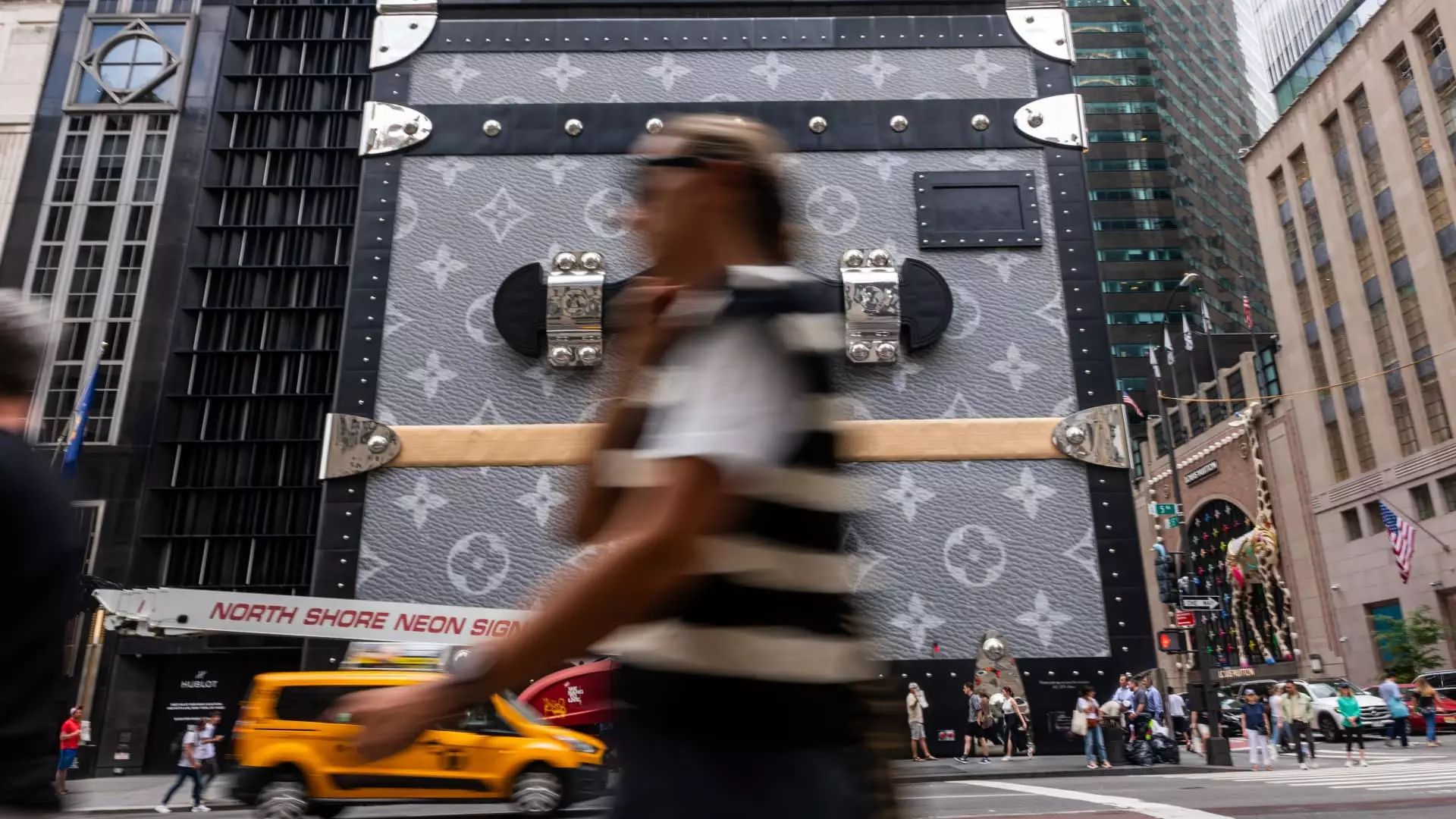The recent performances within the high-end market reveal a landscape riddled with contradictions, exposing the fragility of the so-called recovery. Despite headlines touting signs of revival, behind the scenes, luxury brands are grappling with a troubling persistence of softness that threatens to undermine any optimistic projections. The market is painted with a veneer of resilience, but a closer look tells a story of instability and uneven momentum. As investors react positively to marginally better-than-expected results from giants like LVMH, it becomes increasingly clear that such optimism may be misplaced, masking deeper vulnerabilities lurking beneath the surface.
The latest earnings figures, while showcasing a modest 4% decline in LVMH’s second quarter sales to €19.5 billion, reflect a market still struggling to regain its footing. Rather than signaling a robust recovery, this performance underscores the sector’s overreliance on temporary factors such as tourism-driven demand and currency fluctuations. Deutsche Bank’s analyst Adam Cochrane rightly observes that while there are tiny glimmers of hope—such as a rebound in constant currency sales—the core challenges remain unresolved. The luxury market’s dependence on the whims of tourism and fluctuating exchange rates renders its so-called recovery fragile and vulnerable to external shocks.
Uneven Geographies, Shifting Dynamics
Geographical variance exposes the uneven nature of this recovery narrative. The dramatic slump in the Japanese yen last year initially fueled a tourist and spending boom, creating a feeding frenzy of luxury shopping. However, that surge has largely dissipated, with sales plummeting in Japan—Richemont’s 15% decline and other brands’ subdued performances highlighting the volatility of this rebound. Meanwhile, Europe and Japan face a decline in tourism, pushing luxury brands to rely on different markets, primarily the U.S., which has shown resilience but is far from a sign of a full-fledged revival.
Crucially, this shift reflects an underlying truth: the luxury consumer is increasingly segmented and geographically segmented. While some markets stumble, others, notably China and the U.S., show signs of local purchasing strength—yet these are often reactions to geopolitical uncertainties or preemptive buying ahead of tariffs. Such behaviors distort genuine demand signals and create a false sense of market health. Reliance on domestic markets in China, fueled by a lingering pandemic recovery, is a temporary boon that might not endure once travel fully resumes or if economic policies pivot. The notion of a true, sustainable recovery remains distant, obscured by temporary spikes and tactical purchasing behaviors.
Tariffs and Price Pressures: A Growing Crisis
One of the most perilous developments is the looming shadow of tariffs, which threaten to undo any tentative optimism. While luxury firms have attempted to shield margins by raising prices—some by mid-single digits—the cost of doing so is not without consequences. Inflated prices risk alienating consumers in key markets, especially as a slow-growing, price-sensitive demographic becomes more cautious. The luxury sector is caught in a bind: it must innovate and maintain allure while grappling with higher input costs and the strategic necessity of price hikes.
European luxury brands, dependent on localized production, are particularly exposed. Many have flagged upcoming price increases, but such measures could backfire if consumers perceive the value proposition as no longer compelling. The slow pace of price hikes—averaging just 3% this year—may be a tactical retreat rather than a strategic triumph, especially given the subdued demand and the risk of declining consumer trust. The enduring question is whether the sector can sustain this delicate balancing act—raising prices without pushing buyers away or diminishing brand appeal.
Product Strategy: The Battle for Relevance
As the market remains uncertain, the emphasis on product and brand positioning becomes ever more critical. Richemont’s focus on jewelry, for instance, has been a steadfast pillar of its performance, suggesting that the allure of symbolic, high-end accessories continues to resonate. Conversely, high-end watches and other luxury categories experience stagnation or decline, illustrating that not all divisions within the sector are equally buoyant.
Hermès’ dominance in leather goods exemplifies how traditional craftsmanship and brand authenticity can sustain demand amid wider turbulence. Yet, even this fortress is not immune to market shifts, as consumer preferences evolve and competition intensifies. Investors eagerly anticipate Kering’s groundbreaking strategy under Demna Gvasalia—an attempt to inject fresh energy into Gucci. It’s a gamble that could either revitalize the brand or deepen its struggles if the new creative direction fails to resonate. The luxury sector’s survival hinges on how convincingly these brands can reinvent themselves without diluting their core values.
The Illusion of a Sector on the Mend
Ultimately, the luxury market’s recent performance paints a picture of a sector essentially on life support—an illusion of vitality propped up by strategic price adjustments, sporadic market growth, and fleeting tourist-driven spikes. The underlying economic realities are less encouraging. Consumer confidence in high-end spending remains fragile, and macroeconomic pressures such as inflation, tariffs, and geopolitical uncertainties threaten to stifle this tenuous recovery.
While some investors and industry players cling to the hope that the worst is behind us, the truth is that many of these positive indicators are superficial. The luxury sector’s apparent bounce-back is more a reflection of adaptive tactics and short-term gains than any genuine, robust recovery. Its future stability depends on whether brands can pivot towards authentic innovation, meaningful rebranding, and a reassessment of demand—not just superficial price hikes or capitalizing on transient tourism booms. Until then, the luxury market remains a house of cards, vulnerable to collapse at the slightest gust of economic or geopolitical turbulence.

